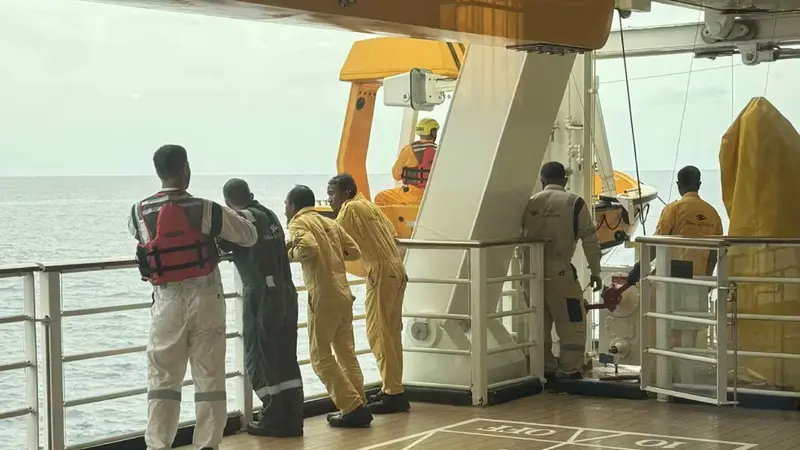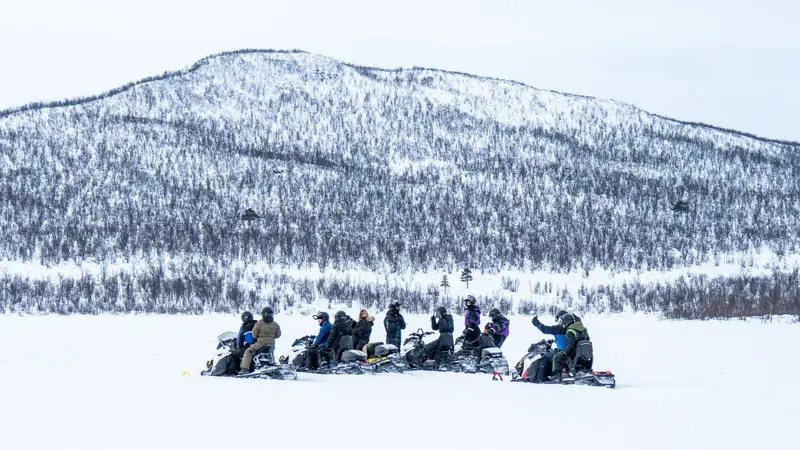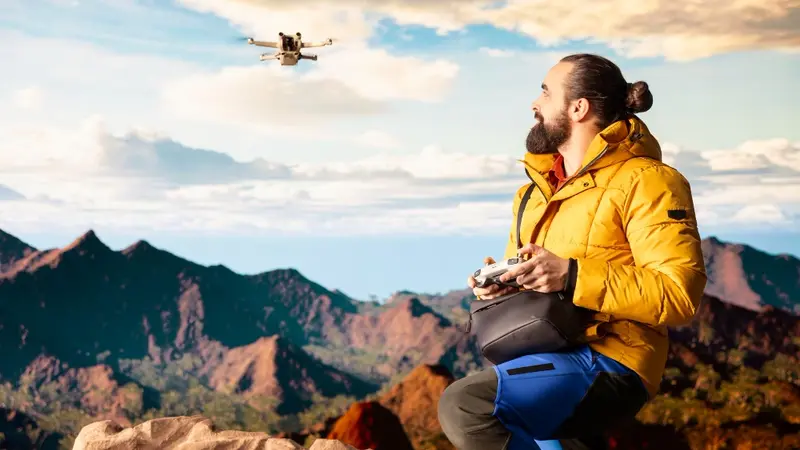The ocean inspires travelers with its vastness and mystery. Cruise vacations allow passengers to enjoy this beauty while sailing across regions filled with culture and charm. Yet maritime travel carries risks. When a cruise ship passenger falls overboard, a rare but alarming situation unfolds. Every case demands fast action, expert response, and an understanding of maritime procedures. This article explores the reality behind these incidents.
The Reality of Overboard Incidents
Cruise travel is popular worldwide. Millions of people embark on voyages each year. The industry emphasizes safety, but accidents and deliberate actions still occur. When a cruise ship passenger falls overboard, rescue operations begin immediately. Every second matters. Modern cruise lines train crew members for emergency responses. Alarms, cameras, and overboard detection systems provide rapid alerts. Locating a person in open water remains complex. Waves, night conditions, and currents can delay searches.
Common Causes of Overboard Events
Many people assume overboard events happen only from reckless behavior. Causes vary. Some passengers lose balance after alcohol consumption. Others face mental health struggles and become associated with cruise ship jumpers. In rare cases, crime is suspected. Structural design reduces risks. Railings meet international height standards. Signs warn passengers about leaning or climbing. Unpredictable actions bypass these safety features. Crew vigilance and passenger awareness remain vital.
Search and Rescue Operations
When a cruise ship passenger falls overboard, the bridge crew activates a rapid plan. The ship may slow or turn to retrace its path. Crew launch rescue boats. Coordinated communication begins with nearby vessels and maritime authorities. Search operations use spotlights, thermal imaging, and life rings. Helicopters may assist if close to shorelines. Rescue times depend on weather, visibility, and distance traveled before detection. Survival depends on minutes.
Technology and Detection Systems
Cruise ships now install man-overboard detection systems. These tools use motion sensors, infrared cameras, and tracking software. They alert the bridge when a passenger crosses railing lines or enters the water. Not all ships operate with identical systems. Regulations encourage upgrades, but older vessels may rely more on human observation. Cameras and crew remain essential. With every report of cruise ship jumpers or accidental falls, the industry adapts to new safety solutions.
The Human Factor in Overboard Events
Human behavior shapes many outcomes. Crew training prepares them for rapid action. Passengers also influence risk. Responsible behavior, awareness of surroundings, and mental health support reduce potential incidents. Cruise lines invest in staff education and counseling programs. Security teams monitor passenger conduct. Medical staff assist guests in distress. Recognizing warning signs helps prevent crises before they escalate.

Survivor Stories and Real Cases
Accounts of survivors remind travelers about resilience and quick response. Some passengers rescued after falling describe struggles with waves, cold water, and fear. In such cases, every minute counts. Reports of cruise ship jumpers attract significant media attention. These stories spark debate about safety standards and personal responsibility. Some view them as rare tragedies, others argue for stronger detection requirements. Each case underscores the challenges at sea.
Industry Regulations and Standards
The cruise industry operates under strict maritime laws. International conventions set safety standards for railings, lifeboats, and rescue drills. These regulations ensure consistency across global fleets. When a cruise ship passenger falls overboard, investigations follow. Authorities review camera footage, witness statements, and ship logs. Findings may influence future safety policies. Regulations evolve after lessons from real incidents.
Prevention Through Passenger Awareness
Prevention remains the strongest safeguard. Passengers benefit from knowing safety rules. Staying away from railings when seas are rough, avoiding excessive alcohol, and traveling with companions reduce risk. Mental health support during voyages is important. Cruise lines provide medical staff and support channels. Awareness campaigns remind guests that crew members are ready to help. Recognizing this support lowers chances of deliberate incidents.
The Role of Crew Training
Crew preparedness determines the outcome of emergencies. Staff practice drills, coordinate communication, and maintain readiness. When a cruise ship passenger falls overboard, training ensures fast and structured response. Rescue operations demand teamwork across departments. Bridge officers, deck crew, security, and medical teams each play critical roles. Their precision reflects industry investment in safety culture.
Psychological Impact on Witnesses and Crew
Witnessing an overboard event creates emotional stress. Passengers may experience shock or fear. Crew members managing rescues carry responsibility for lives at stake. Support services help those affected. Counseling programs exist for crew members and passengers alike. Mental health care is part of the wider safety system.
Future Innovations in Maritime Safety
Technology continues to evolve. Artificial intelligence assists in detecting irregular passenger movements. Enhanced satellite communication improves coordination with coast guards. Future ships may feature automatic drones for search missions. With each case where a cruise ship passenger falls overboard, new lessons shape these innovations. Progress aims to reduce risks and improve survival rates.
- Cruise lines are testing AI-driven monitoring and smart detection systems to improve passenger safety.
- New concepts like rescue drones and advanced satellite links aim to speed up search and rescue efforts.
Travel Tips for Cruise Passengers
Safe travel begins with awareness. Passengers can protect themselves by staying alert on open decks. Standing too close to railings or climbing furniture increases danger. Simple caution helps reduce accidents. Moderate alcohol consumption plays an important role. Impaired judgment leads to risky behavior. Guests should drink responsibly and remain aware of their surroundings. Traveling with companions adds an extra layer of safety.
- Pack light but include essentials like sunscreen, comfortable shoes, and motion sickness remedies.
- Stay hydrated and eat balanced meals to enjoy activities without fatigue.
- Respect safety signs on decks and avoid risky behavior near railings.
- Limit alcohol intake to maintain awareness and good judgment.
- Join safety drills and listen carefully to crew instructions for a secure voyage.

Final Thoughts
When a cruise ship passenger falls overboard, the event tests the strength of maritime safety systems. Modern ships carry advanced tools, trained crew, and coordinated rescue plans. Challenges remain due to human behavior and the vastness of the sea. By combining technology, awareness, and regulation, the cruise industry continues to adapt. If you need more details GLOBAL TRAVEL MAGAZINE to visit.
Frequently Asked Questions
Q1: How safe is cruise travel for families?
Ans: Cruise travel is considered safe for families. Ships follow strict safety regulations, and crew members receive training to handle emergencies. Parents should supervise children on open decks and attend safety briefings.
Q2: What steps can passengers take to stay safe during a cruise?
Ans: Passengers can reduce risks by avoiding excessive alcohol, staying alert on open decks, respecting safety barriers, and traveling with companions. Awareness of surroundings is key to safer voyages.
Q3: Are cruise ship jumpers a common concern for travelers?
Ans: No. Media stories highlight these incidents, but they remain rare compared to the millions of people who travel on cruises every year. Passengers should feel confident about ship safety standards.
Q4: What medical or wellness support is available on a cruise?
Ans: Cruise ships carry medical staff and facilities to handle emergencies. Some ships also offer counseling and wellness services for passengers who feel unwell or stressed during the journey.
Q5: What travel tips help passengers enjoy a safe and relaxing voyage?
Ans: Travelers should pack comfortable shoes, apply sunscreen, stay hydrated, and attend safety drills. Planning excursions with trusted providers also adds to a secure and enjoyable trip.


